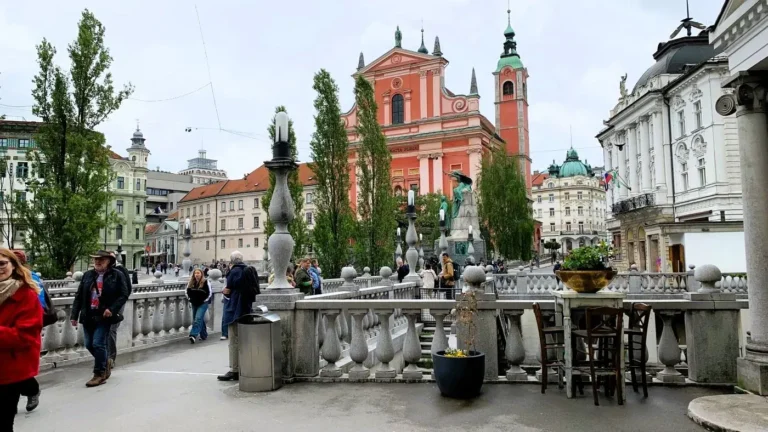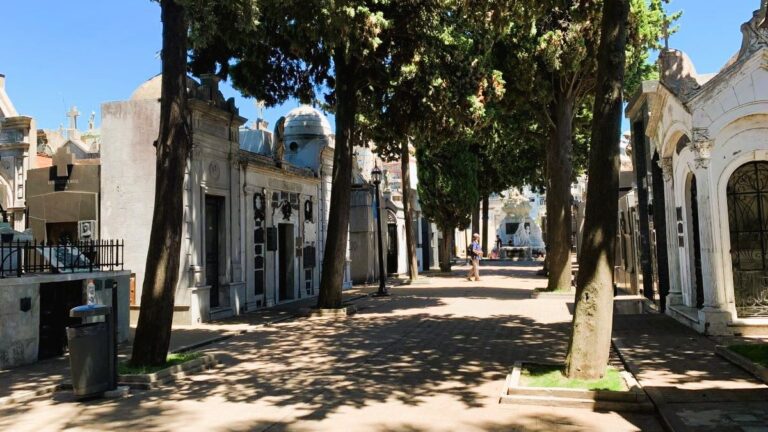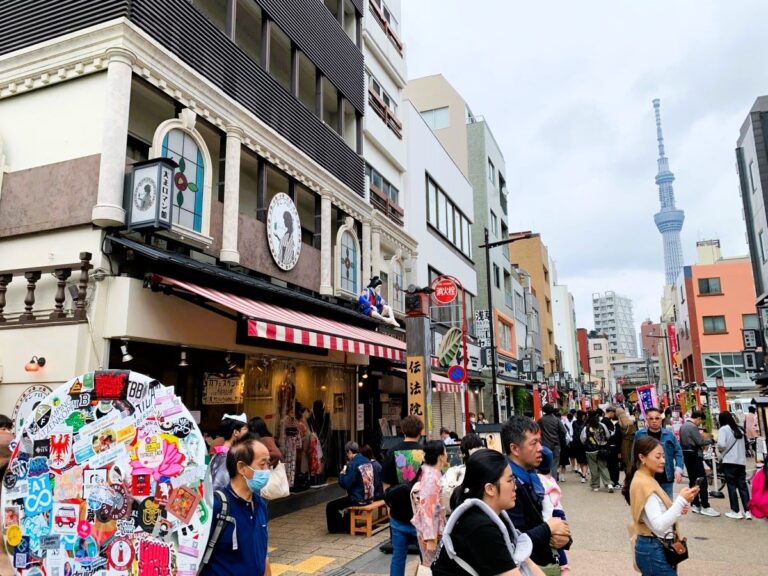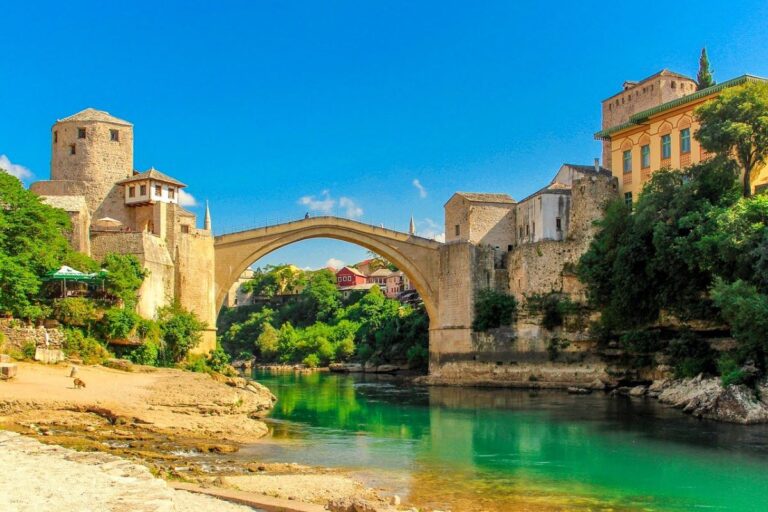15 Unmissable Things to Do in Rio de Janeiro: Beaches, Landmarks, and Culture

Best Things to Do in Rio de Janeiro
We spent 10 days in Rio de Janeiro in January 2025. It may be the best time to visit this gorgeous city. The sky was blue and the weather was perfect! We loved it!
Below is a short video of the highlights of some of the main attractions in Rio de Janeiro. Keep reading for more.
You’ll hear a lot about how unsafe Rio is. But the truth is that it’s not so bad. It’s mostly exaggerated. You need to be careful, of course. And if you take certain common-sense safety precautions, you’ll be just fine.
Related Posts:
It is a lively and beautiful city with stunning natural landscapes, gorgeous beaches, and a vibrant culture. And the food is to die for! We had some of the best steaks here.
From the iconic Christ the Redeemer towering above the city to the lively sands of Copacabana and Ipanema beaches, there’s an endless list of things to do in Rio de Janeiro.
Rio de Janeiro is a very well-organized and efficient city. You experience efficiency the moment you land at the Galeão International Airport (GIG). We went through customs and immigration literally in minutes. By the time we got to the carousel, our luggage was already there. Impressive!
Next, we had to take an Uber from the airport to our hotel. It was so easy.
There were signs everywhere directing us to the pickup area. You have to go outside and turn left to get to the pickup area. It’s a bit of a walk, but not bad.

The Uber pickup system is well-organized with designated colored zones that make it easy for passengers to find their ride. Different pickup areas are marked by colors, such as purple, green, and orange. The driver knows which zone you’re in, and he arrives.
We went to the green zone and ordered the Uber from there, and the driver showed up within 10 minutes or so.
We had booked our stay at Orla Copacabana Hotel in Rio’s most famous neighborhood, the legendary Copacabana. We were right on the beach, just across the road. It was perfect!
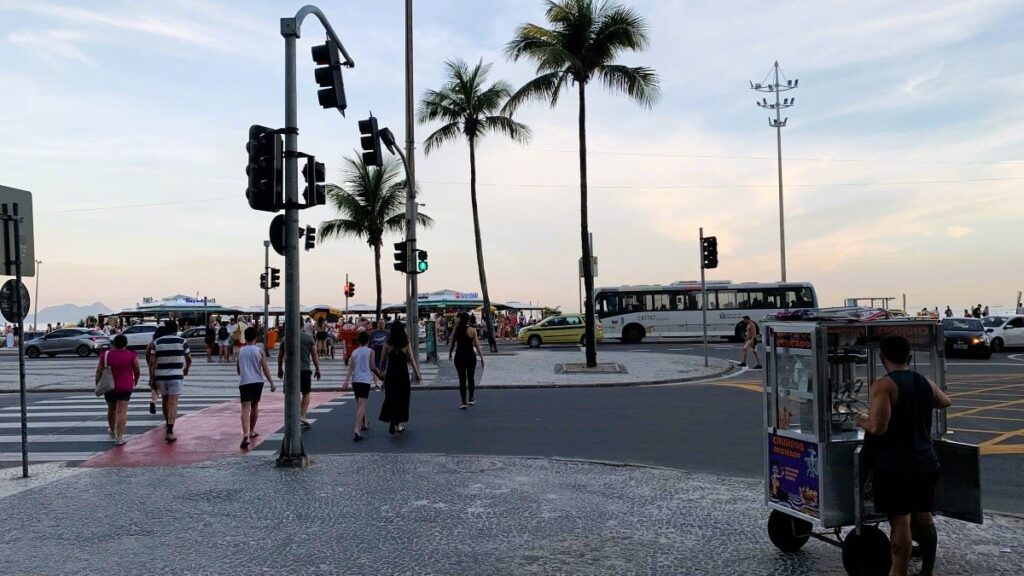
Would you like to create a personalized Rio de Janeiro itinerary? Have fun with my FREE ITINERARY GENERATION TOOL below:
Something else we loved about Rio de Janeiro is the culture of respect for the elderly.
The seniors are given priority in many aspects of daily life, making it a notably age-friendly city. Whether at grocery stores, shopping malls, public transportation, or even ticket lines for attractions, older adults enjoy preferential treatment.
Many establishments have dedicated priority lines, allowing seniors to bypass long queues and receive service more quickly. Public transport also reserves seats for them, and in some cases, they can travel for free.
This deeply ingrained culture of respect for the elderly ensures that older residents and visitors can navigate the city with ease and comfort.
Now let’s dive in and look at the unmissable and best things to do in Rio de Janeiro.
Famous Landmarks to Visit
Rio de Janeiro offers many iconic spots to experience. But there are four that are must-visit landmarks that you can’t skip if you’re looking for the best things to do in Rio de Janeiro.
Christ the Redeemer
Christ the Redeemer is an emblem of Brazil and one of the New Seven Wonders of the World.

Perched on Mount Corcovado at 2,300 feet above sea level, this 98-foot statue of Jesus Christ stretches its arms wide as if embracing the city below. Its construction, completed in 1931, was a feat of engineering and devotion, symbolizing peace and Christianity.

Reaching this world-renowned landmark is part of the fun. You can take the Corcovado Train, which gives you a peaceful 20-minute ride through the lush greenery of Tijuca National Park.
You can also opt for a van service, or even hike through the lush Tijuca National Park for a truly immersive experience.
Whichever way you choose, the view from the top, where Rio sprawls out in all its glory, is worth every step.
Opening Hours:
Christ the Redeemer is open daily from 8:00 AM to 6:00 PM. If you want fewer crowds and softer lighting for photos, visiting early in the morning or late afternoon is ideal. Make sure it’s a clear day and not too cloudy when you visit.
Tickets & Access:
- Trem do Corcovado (Cog Train): Round-trip tickets start at R$97 (low season) and R$129 (high season) for adults. Trains depart every 30 minutes.
- Official Vans: Prices vary by departure point, averaging R$60 to R$100.
- Hiking: Free, but be ready for a challenging trek! You’ll still need to pay R$40 for statue entry at the top.
You can pay by credit card.
Although it’s recommended by many blogs to book tickets online in advance, especially during peak seasons, to avoid long queues, my recommendation is not to do that. The reason is that you don’t know what the weather will be like on the day you visit. If it turns out that it’s raining and cloudy that day, then if you booked your tickets in advance, there’s nothing you can do about it. It’s better to make sure that it’s a good day to visit before heading out.
We bought our tickets the same day, and the wait wasn’t bad at all. I believe we may have waited in line for about 30 to 45 minutes. Make sure you carry water bottles with you. Stay hydrated.
Sugarloaf Mountain

Rising majestically from the vibrant cityscape of Rio de Janeiro, Sugarloaf Mountain (Pão de Açúcar) stands as an iconic symbol of Brazil’s natural beauty.
This granite peak offers visitors unparalleled panoramic views of the city, its famous beaches, and the expansive Atlantic Ocean.
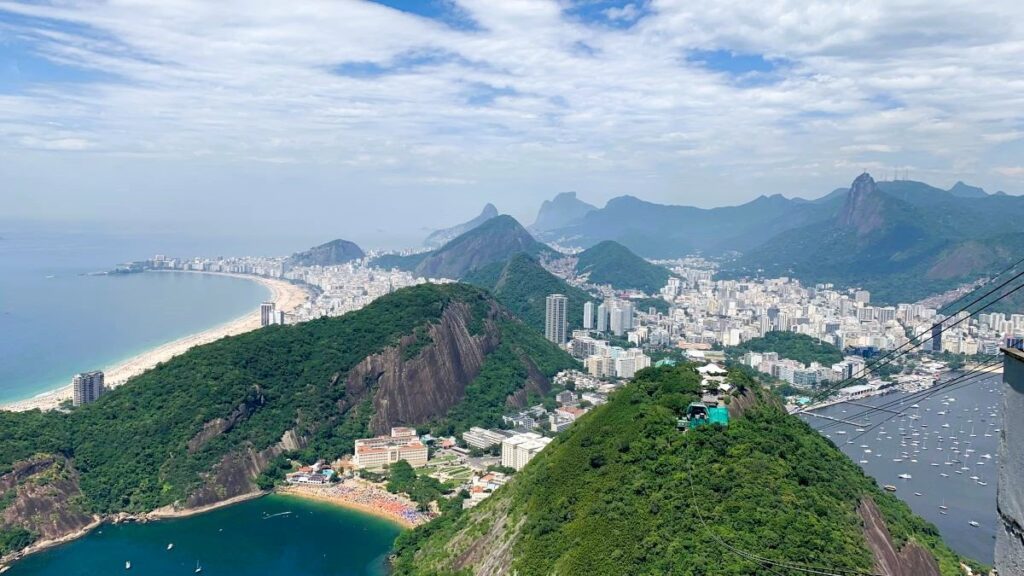
Cable Car Experience: The journey to the top is facilitated by a two-stage cable car system. The first leg transports you from the base at Praia Vermelha (Red Beach) to Morro da Urca, a smaller hill that serves as an intermediary stop. From there, the second cable car ascends to the pinnacle of Sugarloaf Mountain.

Each cabin is enclosed with glass, accommodating up to 65 passengers, ensuring safety while offering 360-degree views of the Rio’s curves—its beaches, the Guanabara Bay, and the bustling cityscape.
The ride is smooth and perfect for photographing the beauty of the city from an entirely different perspective.

If you like an extra challenge, hiking trails leading to the first cable car station combine outdoor adventure with stunning views.
Ticket Information: Ticket prices can vary based on age and residency, with discounts often available for children, seniors, and Brazilian residents. As of now, in early 2025, general admission for adults is approximately R$150. From our experience, you don’t need to buy in advance. The line moves fast.
Opening Hours: Monday to Thursday, from 9:00 AM to 8:00 PM. Last boarding is at 6:30 PM. Friday to Sunday, from 8:30 AM to 8:30 PM. Last boarding is at 7:00 PM.
Best Time to Visit: For an unforgettable experience, consider timing your visit to coincide with the sunset. Watching the sun dip below the horizon, casting hues of gold and crimson over Rio de Janeiro, is a sight to behold.
Arriving in the late afternoon allows ample time to explore both Morro da Urca and Sugarloaf Mountain before witnessing this daily spectacle.
Before embarking on your journey to Sugarloaf Mountain, it’s recommended to check the official website or contact the attraction directly to confirm the latest information on operating hours and ticket prices.
Escadaria Selarón
Nestled in the Santa Teresa neighborhood, Escadaria Selarón is a vibrant explosion of colors and culture. These 215 steps were transformed by Chilean artist Jorge Selarón into a mosaic masterpiece—a tribute to the people of Brazil.
The staircase features tiles collected from over 60 countries, forming a kaleidoscope of patterns and themes.
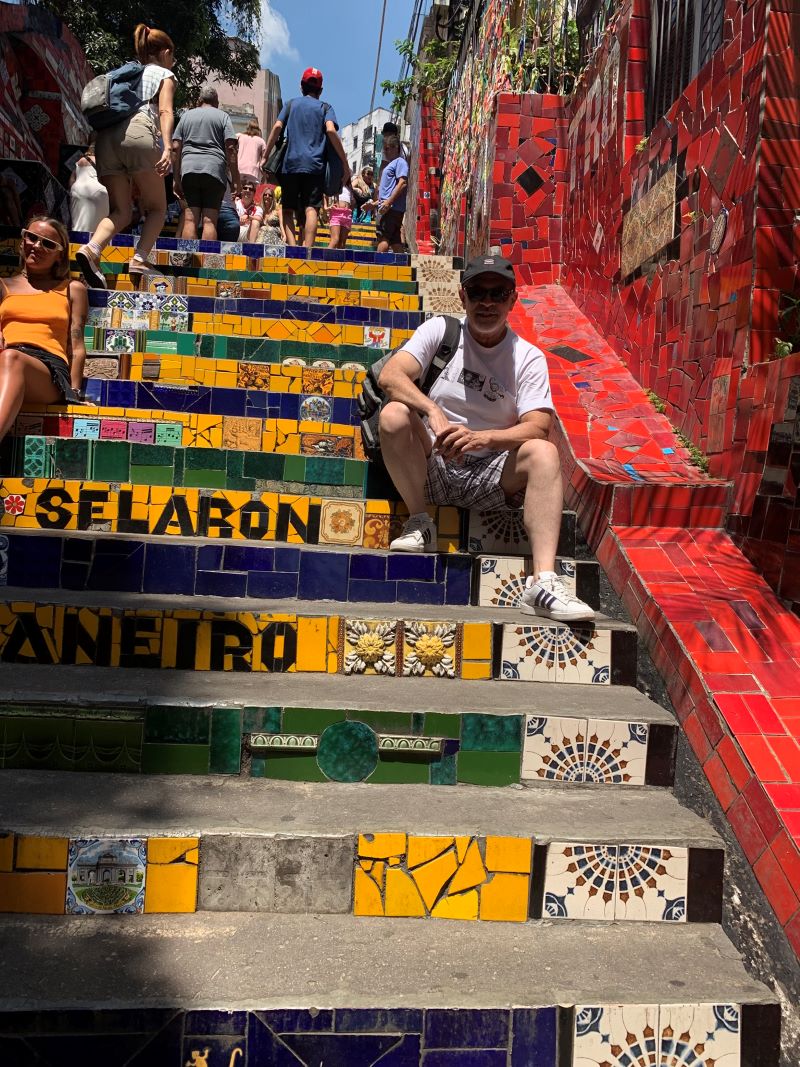
Selarón started the project in the 1990s, initially as a way to renovate the staircase outside his home. Over decades, it grew into an artistic wonder that is now one of Rio’s most loved landmarks.
Learn more about him and the staircase’s fascinating history here.
Lapa Arches (Arcos da Lapa)
The Lapa Arches (Arcos da Lapa) stand as one of Rio de Janeiro’s most iconic landmarks, blending history, architecture, and vibrant city life.

Originally built in the 18th century as an aqueduct to bring fresh water to the city, this impressive white-stone structure now serves as a bridge for the famous Santa Teresa Tram.
By day, the arches offer a glimpse into Rio’s colonial past, but by night, they transform into the heartbeat of the city’s nightlife—surrounded by lively samba clubs, bustling bars, and street performances.
The Lapa Arches are just a short 5-minute walk (about 400 meters) from the Escadaria Selarón, making it easy to visit both landmarks in one trip. Start with the colorful, mosaic-covered steps of Selarón and then head to the arches to soak in the atmosphere of Lapa!
From here, you can continue towards the Metropolitan Cathedral. They’re all within walking distance.
Beaches and Outdoor Activities
Rio de Janeiro’s beaches are world-renowned for their vibrant atmosphere and stunning views, making them a must-see on any trip. Beyond the sands, the city offers lush parks and tranquil spots that showcase Brazil’s natural beauty. Here’s an inside look at some highlights.
Copacabana Beach: Iconic Status, Amenities, and Vibes
If there’s one beach that encapsulates the energy of Rio, it’s Copacabana. This 2.5-mile crescent of white sand, framed by the deep blue Atlantic and bustling Avenida Atlântica, is the heart of the city – one of the best things to see and do in Rio de Janeiro. From sunbathing to volleyball games, the vibe is electric and social.

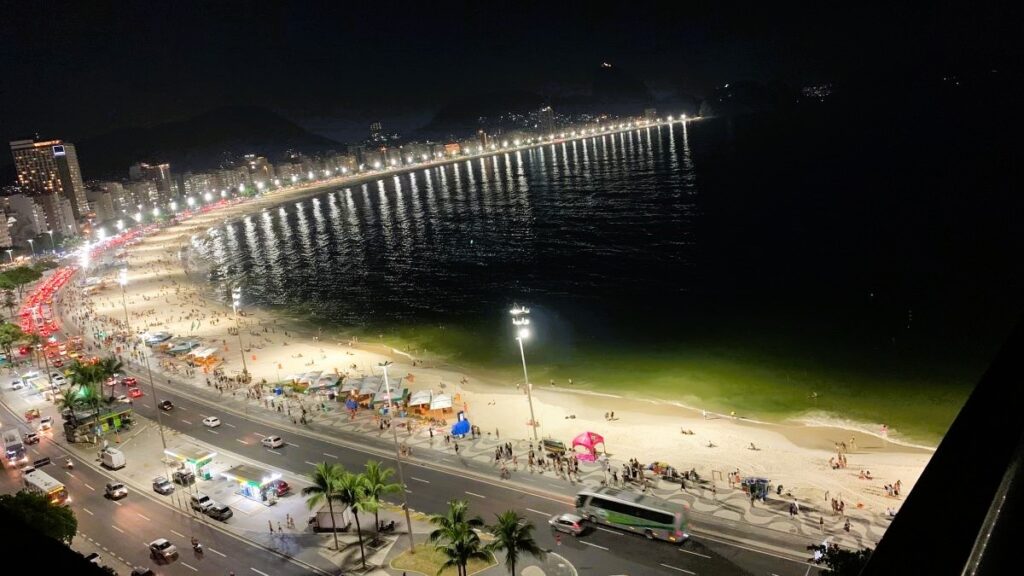


You’ll find everything you need here. Vendors stroll the sands with snacks like açaí bowls and chilled fresh coconuts, while nearby kiosks sell cocktails or rent umbrellas.
The boardwalk, paved in its iconic wavy-pattern mosaic, is perfect for cycling or people-watching.
Copacabana also lights up at night, so stick around after sunset.
Learn more about what makes this beach stand out here.
Ipanema Beach: Sophistication and the Perfect Sunset Spot


While Copacabana hums with liveliness, Ipanema offers a slightly more laid-back and upscale vibe. Its deeper blue waters contrast with lush backdrops, and the beach culture here is distinct.
Ipanema is known for its stylish beachgoers, vibrant beach bars (barracas), and distinct personality in each of its postos (lifeguard stations).
Ipanema’s sand feels softer, and the views are punctuated by the majestic “Two Brothers” mountains (Morro Dois Irmãos).
Watching the sunset from here, especially near Arpoador rock—a popular lookout point between Copacabana and Ipanema—is truly a magical experience.
Leme Beach: A Serene Escape Next to Copacabana
Tucked away at the eastern end of the famous Copacabana Beach, Leme Beach (Praia do Leme) offers a quieter, more relaxed alternative to its bustling neighbor.
Leme embraces a slower pace, compared to the vibrant energy of Copacabana, making it a perfect spot for those looking to enjoy Rio’s stunning coastline without the large crowds.
With its soft golden sands, gentle waves, and a picturesque backdrop of the Morro do Leme hill, this beach feels like a hidden gem within the city.
Leme is popular among locals, families, and those seeking a more tranquil beach experience. It retains a classic carioca (local Rio) charm, with beachside kiosks serving fresh coconut water, cold caipirinhas, and delicious seafood.
The waters here are generally calmer than in other parts of Rio, making it a great spot for swimming, though occasional strong waves can attract surfers as well.
If you’re seeking some adventure, Forte do Leme (Leme Fortress), located at the far end of the beach, offers a scenic hike with breathtaking panoramic views of the coastline, Sugarloaf Mountain, and the vast Atlantic Ocean. The fortress is a lesser-known attraction compared to its Copacabana counterpart, but it’s well worth the visit if you’re looking to experience a piece of Rio’s history away from the crowds.
In terms of safety, Leme Beach is considered safer than Copacabana, particularly during the day. However, as with any tourist area in Rio, it’s best to remain aware of your surroundings, avoid displaying valuables, and stick to well-lit areas at night.
Leme Beach is for those who want a more laid-back yet equally beautiful slice of Rio’s coastline.
Jardim Botânico

When you’ve soaked up enough sun, Rio’s green spaces offer the perfect escape. The Jardim Botânico, or Botanical Garden, is a serene oasis of towering palm trees, orchids, and native Brazilian plants.
It also features a sensory garden and tranquil water features—great for a leisurely stroll on a sunny afternoon.
Explore Tijuca National Park
Escape the city bustle in this expansive urban rainforest filled with hiking trails, waterfalls, and even monkeys if you’re lucky!
Tijuca National Park is a lush green paradise that offers a breathtaking escape from the city’s bustling pace. As one of the largest urban rainforests in the world, this tropical haven is a playground for nature lovers, hikers, and anyone looking to experience the wild side of Rio.
With cascading waterfalls, scenic viewpoints, and an astonishing diversity of plants and wildlife, Tijuca is a great place to get away for an adventurous hike to the iconic Pico da Tijuca or a peaceful walk under the canopy of towering trees.
Cultural and Historical Attractions
Rio de Janeiro is also packed with cultural and historical gems.
From renowned museums to bohemian neighborhoods, these spots offer a different perspective on what makes Rio so unforgettable. Here are three cultural highlights you shouldn’t miss.
Museu do Amanhã (Museum of Tomorrow)
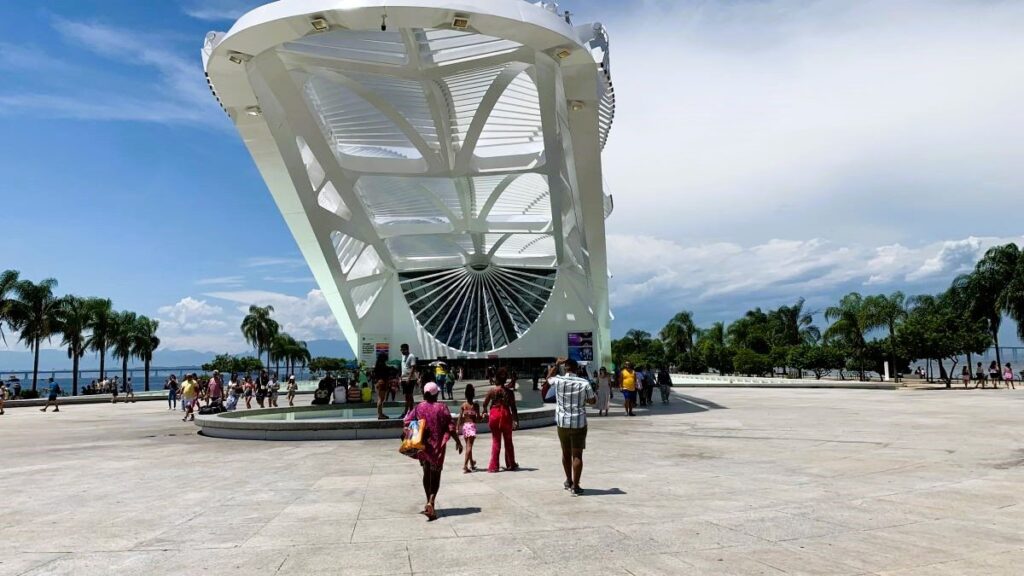

This is a fascinating futuristic museum. It should be high up on your list of things to see and do in Rio de Janeiro.
Designed by Santiago Calatrava, it’s an experience that encourages visitors to reflect on humanity’s choices and their implications for the planet.
The exhibits focus on sustainability and the interconnectedness of life on Earth. Inside, you’ll find immersive installations that explore themes like climate change, technological advancements, and the future of biodiversity.
It’s a thought-provoking experience that combines science and imagination. It invites visitors on an immersive journey to explore the possibilities that lie ahead for our planet and humanity. The main exhibition is organized around five profound questions:
- Where did we come from?
- Who are we?
- Where are we?
- Where are we going?
- How do we want to live together over the next fifty years?
These inquiries guide visitors through a series of interactive experiences that delve into topics such as climate change, biodiversity, population growth, cultural integration, technological advancements, and the expansion of knowledge.
If you’re curious about its mission and visitor details, learn more at The Museum of Tomorrow.
Aside from its content, the museum’s location is also a treat—the Praía Mauá surroundings offer stunning views and a chance to explore the nearby revamped waterfront area.
Opening Hours and Admission:
- Visiting Hours: Tuesday to Sunday, operating between 10:00 a.m. and 6:00 p.m., with the last admission at 5:00 p.m. It’s closed on Mondays.
Metropolitan Cathedral of Saint Sebastian
In the heart of Rio de Janeiro – just a short walk away from Lapa Arches (Arcos da Lapa) – stands the Metropolitan Cathedral of Saint Sebastian, a remarkable fusion of modernist design and spiritual significance.

Unlike traditional cathedrals, its towering conical structure, reminiscent of Mayan pyramids, symbolizes a connection between the earthly and the divine.

Inside, you are captivated by four expansive stained-glass windows that ascend from floor to ceiling, converging at the apex to form a luminous cross, bathing the interior in a kaleidoscope of colors.
It’s an architectural marvel and a place of worship.
Opening Hours and Admission:
- Visiting Hours: The cathedral welcomes visitors daily from 7:00 AM to 5:00 PM.
- Mass Schedule: Services are held at noon from Monday to Saturday, and at 10:00 AM on Sundays.
- Admission: Entry to the cathedral is free, allowing everyone the opportunity to experience its spiritual and architectural grandeur.
Tour the Theatro Municipal
Step inside one of Brazil’s most beautiful buildings for a guided tour—or even better, catch a live performance.
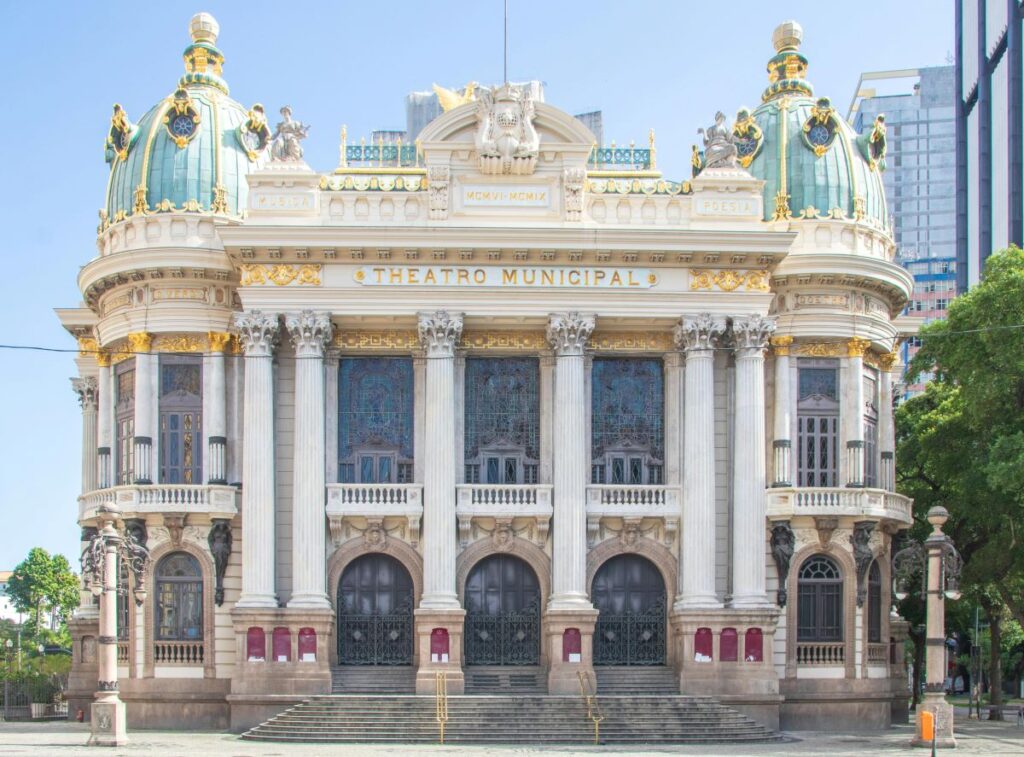
Nestled in the heart of São Paulo, the Theatro Municipal stands as a beacon of cultural and architectural splendor. Established in 1911, this iconic opera house has been a stage for legendary artists such as Enrico Caruso, Maria Callas, and Duke Ellington, and played a pivotal role in the 1922 Modern Art Week, marking a significant moment in Brazil’s artistic evolution.
It’s conveniently located near the Anhangabaú metro station, making it easily accessible for visitors.
Tours: To fully appreciate the theater’s rich history and stunning architecture, consider joining one of the guided tours. These tours offer an in-depth look into the theater’s past and present. You can visit the official website for reservations and more information.
Opening Hours: The theater’s box office operates from Monday to Friday, 10:00 AM to 7:00 PM, and on Saturdays, Sundays, and holidays from 10:00 AM to 5:00 PM. It’s advisable to check the official website or contact the theater directly for the most current information on tours and performances.
Ticket Information: Tickets for performances can be purchased at the theater’s box office during the hours mentioned above. Please refer to the theater’s official website for detailed information on ticket prices, seating, and upcoming shows.
A visit to the Theatro Municipal not only offers a glimpse into Brazil’s rich cultural tapestry but also an opportunity to witness world-class performances in a historic setting.
Santa Teresa Neighborhood and Tram
Santa Teresa is where art, history, and charm collide to create one of Rio’s most charismatic neighborhoods. Known as the “Montmartre of Rio,” this area boasts a bohemian vibe with galleries, street art, and cozy restaurants tucked within quiet, cobblestone streets. It’s the kind of place where every corner feels like a snapshot of the city’s soul.

One of the best ways to dive into Santa Teresa’s atmosphere is by hopping on the iconic Santa Teresa Tram.
This vintage tramway—one of the oldest tram systems in Brazil—connects downtown Rio to the neighborhood. It’s a ride through time. As the open-sided tram bounces along its historic tracks, you’ll pass colorful homes, striking street art, and lush greenery, with sporadic city views in the backdrop.
Tickets are inexpensive, and the tram departs regularly, making it easy to fit into your itinerary. It starts downtown near the Metropolitan Cathedral, making it conveniently located for central sightseeing.
You can check schedules and details here.
Insider tip: Once in Santa Teresa, stop by Largo dos Guimarães, the heart of the neighborhood, for local eats and a great spot to soak in the artistic energy. This area won’t disappoint.
Best Dining in Rio
One of the best things to do in Rio de Janeiro is to eat steak! 🙂
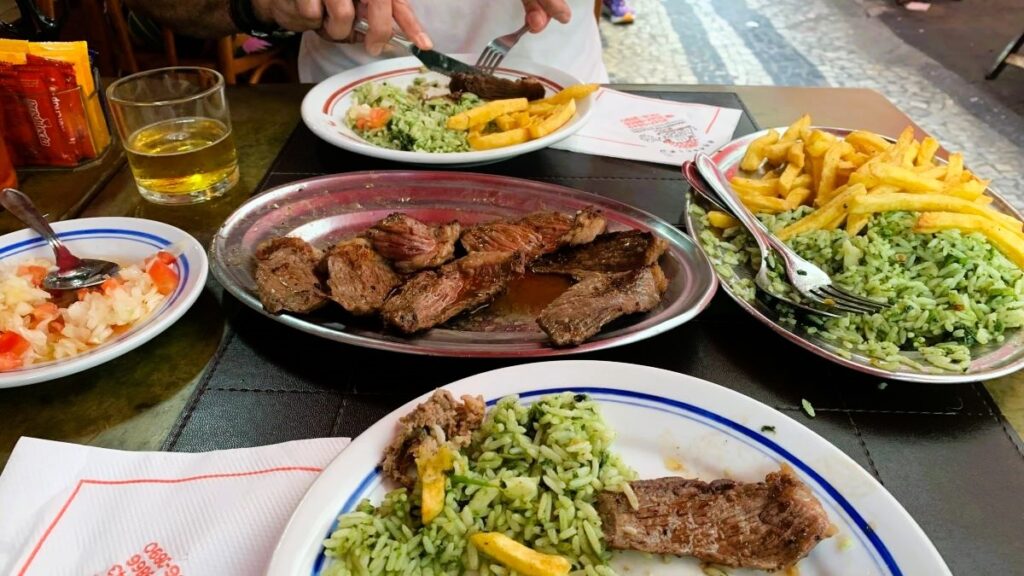
Brazil is synonymous with churrasco, or barbecue, and Rio is home to some of the best steakhouses in the world.
These are some of the spots to check out:
- Fogo de Chão: Located in front of Sugarloaf Mountain. Known internationally for its authentic Brazilian barbecue experience, this is a must-visit. Their all-you-can-eat approach pairs perfectly with the traditional rodízio (meat served tableside). The cuts here are savory, tender, and grilled to perfection. Reserve a night to indulge!
- Marius Degustare: Located near Copacabana Beach, Marius is an unforgettable dining experience that combines premium-quality steak with fresh seafood options. Its eclectic décor and exceptional service elevate your meal. It might just be the best spot in town if you’re looking to break the typical dining mold.
- Churrascaria Palace: Open since 1951, this classic steakhouse adds a touch of elegance to the traditional barbecue. With a gourmet salad bar and an array of rotisserie meats, it’s ideal for anyone eager to taste Rio’s culinary heritage.
If you’ve never experienced traditional Brazilian barbecue, these restaurants will redefine what you thought steak could be.
Famous Iconic Cafes in Rio
Rio’s café culture is just as fulfilling as its dining scene. The city’s historic and modern coffee establishments embrace Brazil’s title as one of the largest coffee producers in the world.
Here are my go-to spots for enjoying a great cup of coffee and dessert.
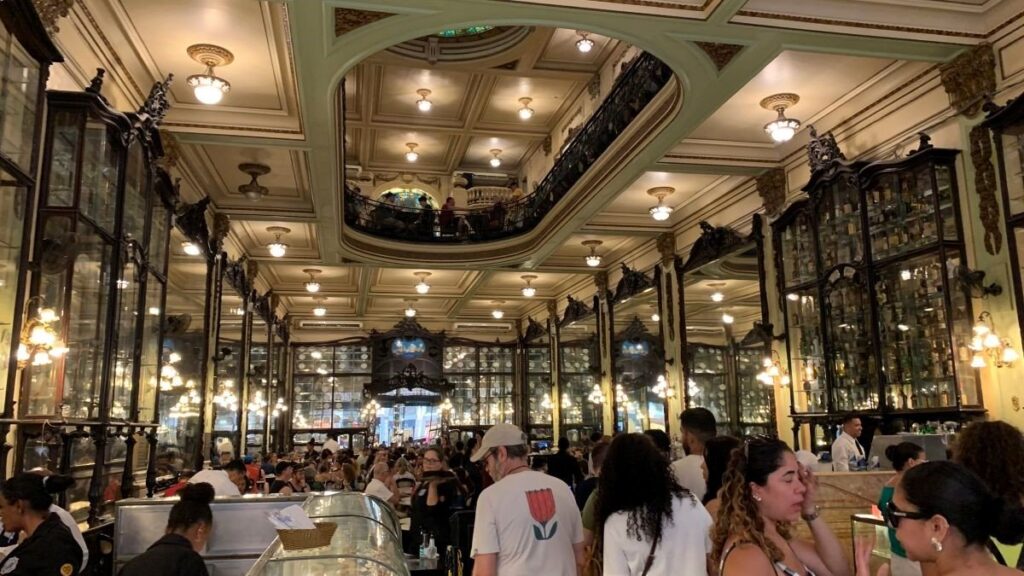
- Confeitaria Colombo: This is one of those must-see cafés. This iconic café is an architectural marvel and a true slice of Rio’s history. Established in 1894, its stunning Belle Époque interiors that make you feel like you’ve stepped back into the grandeur of another era. Sip on a refreshing cafézinho or indulge in their legendary pastries. It’s more than a café—this is an experience worth cherishing.
- Curto Café: Want to experience the modern edge of Rio’s coffee culture? This minimalist café in Lapa is all about flavor over flair. They specialize in high-quality beans roasted on-site, and their pay-what-you-can model makes it accessible for everyone. It’s hands-down one of the coolest spots in town, with plenty of personality.
- Cafe do Forte: Located near the iconic Copacabana Fortress, this café offers not just great coffee but also stunning ocean views. Pair your morning brew with a slice of their decadent cakes, and you’ll be ready to stroll into the day.
Cafes in Rio are a mix of old-school elegance and modern innovation, and you’ll savor every moment—and sip—at these incredible locations.
Safety Tips for Tourists in Rio de Janeiro
While Rio de Janeiro is vibrant and full of unforgettable experiences, being a large city means taking some precautions is necessary. By keeping a few simple safety measures in mind, you can fully enjoy everything the city has to offer without unnecessary worries.
Navigating Tourist Areas
For the most part, the tourist areas like Copacabana, Ipanema, and the Lapa area are safe during the day, but it’s important to stay vigilant at all times. Petty crimes like pickpocketing can occur, especially in crowded places or during events.
Here’s what you should know:
- Stay in popular, busy areas: Stick to well-lit streets and avoid wandering too far from tourist-heavy zones, especially at night.
- Avoid flashing valuables: Keep things like jewelry, expensive watches, or high-end cameras out of sight. Minimizing attention from potential thieves will make your visit safer.
- Choose accommodations wisely: Book hotels or rentals in neighborhoods like Leblon, Copacabana, Ipanema, or Barra da Tijuca. These areas are renowned for their relative safety and vibrant atmospheres.
- Beware in certain neighborhoods: Avoid venturing into favelas unless you’re guided by a trusted local or professional tour agency, as not all are secure or tourist-friendly.
If you’d like a deeper dive into staying safe while visiting, this article provides actionable advice for travelers.
Using Transportation Safely
Getting around Rio can be safe and convenient if you plan ahead. The city’s metro, taxis, and rideshare apps like Uber are great options for tourists. Here are some tips to ensure you travel stress-free:
- Use the Metro: Rio’s metro system is reliable, clean, and one of the safer public transport options, especially during the day. It connects key areas of interest, making it budget-friendly and practical. Avoid traveling too late at night, and always keep an eye on personal belongings.
- Opt for licensed rides: Utilize rideshare services like Uber. We used Uber all the time. They’re typically safer than hailing taxis directly off the street. If using a taxi, ask your hotel concierge to call one for you or look out for marked, legitimate cabs.
- Be cautious with buses: While buses are widespread and cheap, pickpocketing is common, and routes can be confusing for newcomers. Unless you’re confident about your destination and route, it’s often easier to stick with metro or rideshare options.
- Airports to the city: When traveling from the airport, especially Galeão (GIG), avoid public buses. Use Uber for peace of mind.
Taking small steps to ensure your safety while moving around Rio makes all the difference, leaving you free to fully enjoy its beauty.
Conclusion
There’s an endless list of amazing things to do in Rio de Janeiro. It is a city that blends natural wonders and cultural richness, and there’s an unmistakable energy in the air.
From the world-renowned beaches of Copacabana, Ipanema, and Arpoador to iconic landmarks like Christ the Redeemer and Sugarloaf Mountain, there’s no shortage of unforgettable sights and experiences.
Whether you’re exploring vibrant mosaic steps at Escadaria Selarón, admiring the futuristic marvel of the Museum of Tomorrow, or savoring the rhythm of samba in Santa Teresa, Rio provides a constant sense of discovery.
Ready to plan your visit? Let Rio’s beauty and culture leave an impression you’ll never forget. Have a fantastic time!
Please leave a comment or question in the comments section below.
Recent Posts:
-
Lake Bled Day Trip: The Perfect First-Time Adventure from Ljubljana
Welcome! If you’re spending time in Ljubljana and want to experience Slovenia’s most magical landscapes, a Lake Bled day trip from Ljubljana is an easy choice. With its glacial blue water, Lake Bled Island at its center, and Bled Castle perched high on the cliffs, this spot looks straight out of a fairytale—no need for…
-
Best Things to Do in Ljubljana, Slovenia (First-Time Visitor’s Guide)
Welcome! Thank you for visiting my blog about the best things to do in Ljubljana! In this guide I’ll share my own favorite spots and handy tips, best places to eat and some local insights you might not find elsewhere. Ljubljana, the charming capital of Slovenia, is stunning! The architecture is breathtaking! I promise you,…
-
Best Tango Shows in Buenos Aires: My Guide for First-Time Visitors
Buenos Aires is the birthplace of tango – raw, passionate, and unforgettable! But if it’s your first time in the city, choosing the right tango show can feel overwhelming. Do you go for the glamorous, cabaret-style performance with a gourmet dinner? Or do you slip into a smaller, historic venue where tango feels more like…
-
Recoleta Cemetery in Buenos Aires: History, Highlights, and Visitor Tips for 2025
Welcome to Recoleta Cemetery! “If you’re visiting Buenos Aires, this is a place you should see at least once. You’ll leave with photos, stories, and a deeper understanding of Argentina’s history.” Related Posts: Introduction: Why Visit Recoleta Cemetery? Recoleta Cemetery in Buenos Aires is not your typical graveyard.It’s more like an open-air museum filled with…
-
Tokyo vs Osaka: Your Guide To Understanding The Difference Between The Two Most Popular Cities in Japan [2025]
So the question is, Tokyo or Osaka which is better? Do you want to pick between the two? It can feel like it’s hard to decide, especially if it’s your first trip to Japan. We’ve been to both. We loved them both. We spent more days in Osaka than we did in Tokyo, and did…
-
The Ultimate 5-Day Itinerary in Tokyo: A Fun and Easy Guide for First-Time Visitors
5 Day Itinerary in Tokyo – A City of Contrasts and Wonders I’ve created this 5 day itinerary in Tokyo to help you get the most out of your time here. It’s based on my own experience in this incredible city. Tokyo is one of the most exciting cities in the world. It’s a place…




